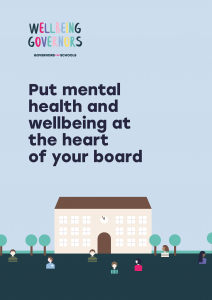
If there are big, and largely well-known, benefits to be gained by young people being more physically active, both in and outside of school – and there are multiple ways to achieve this – then why is it so difficult to make improvements? Governors must have a firm grasp on the various frictions and difficulties that can hamper changing the provision and culture of physical activity in their school, as well as how to create plans and take action that enable and reinforce success.
There’s no time!
School staff are asked to cram a lot into school hours, particularly for age groups facing important examinations or testing. The expectation that the curriculum delivered is both broad and deep and also supported by cultural enrichment and individual attention, all to achieve the best possible results, puts a squeeze on available time and resource. This often results in P.E. and extra-curricular sporting offerings becoming something of an after-thought.
There’s no money!
In a similar vein, funding pressures often result in spending on P.E. and sports to be squeezed. Fortunately, some of this money is ring-fenced, but coaches, equipment and facilities are expensive to hire/purchase/build as well as maintain. It can be tempting for a school to concentrate on the academic and leave everything else on the shoulders of parents to arrange or fund.
Pupils hate it!
Many pupils express a dislike, or even fear, of organised physical activity at school. They may not find particular activities fun or engaging, some may feel uncomfortable being in competition or have concerns about how they might appear in front of their peers due to their sense of self-image or concerns over being insufficiently physically talented. This particularly affects girls when they transition from primary to secondary school. Many of these concerns are understandable and when spread across a significant portion of the student population, can make P.E. and sport far from enjoyable for students and staff alike.
Nobody is that concerned!
Related to pupils actively avoiding and disliking exercise and sport is a general apathy around the topic. If they don’t see it as fun and important, and staff and parents aren’t pressing the issue, then it’s easy to fall into a routine of the bare minimum and box ticking to fulfil curriculum requirements. Perhaps parents, and even staff, had poor experiences of organised sport/P.E. at school and are comfortable with the status quo, or leaving it up to their children to engage. Perhaps nobody is concerned because nobody knows what they are missing out on – genuine and sustainable psychological, physical, medical, emotional, social, cognitive and educational improvements in their lives.
Taken as a whole, what is preventing schools improving this aspect of their ethos and practice is often a sense of inertia. This is why a whole school approach aimed at changing culture is the solution. But this needs to be built on careful planning and a firm understanding of what is currently being done and what is possible to achieve.
Our thanks to Yorkshire Sport and Active Sussex, Sport Wales, Sport England and the Children’s Health and Exercise Research Centre (CHERC) of the University of Exeter for their assistance with this article.